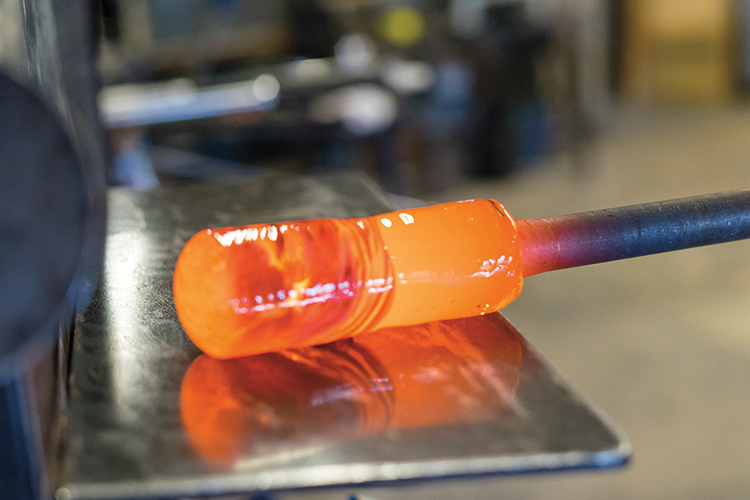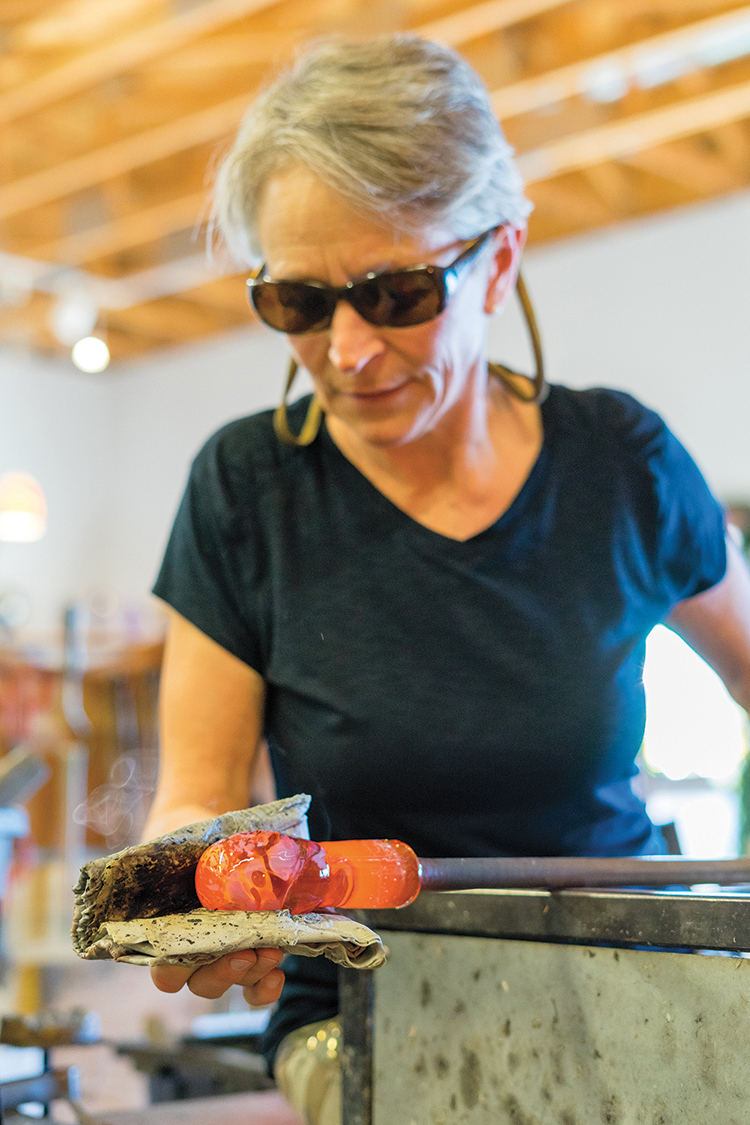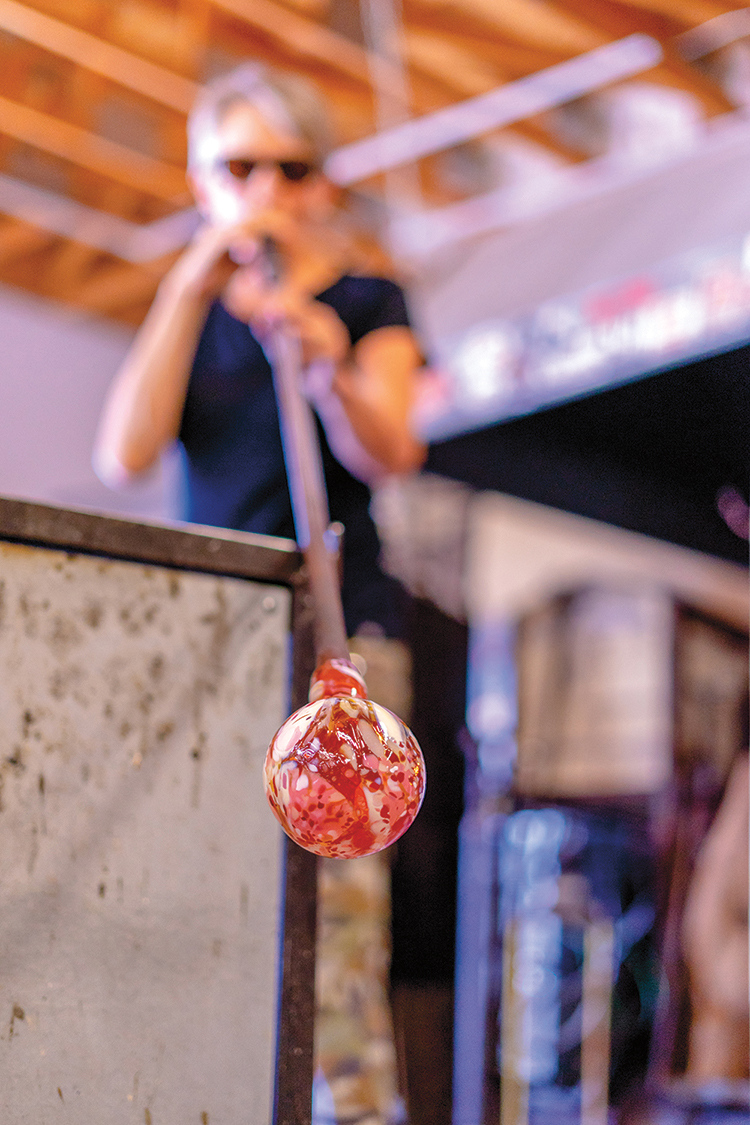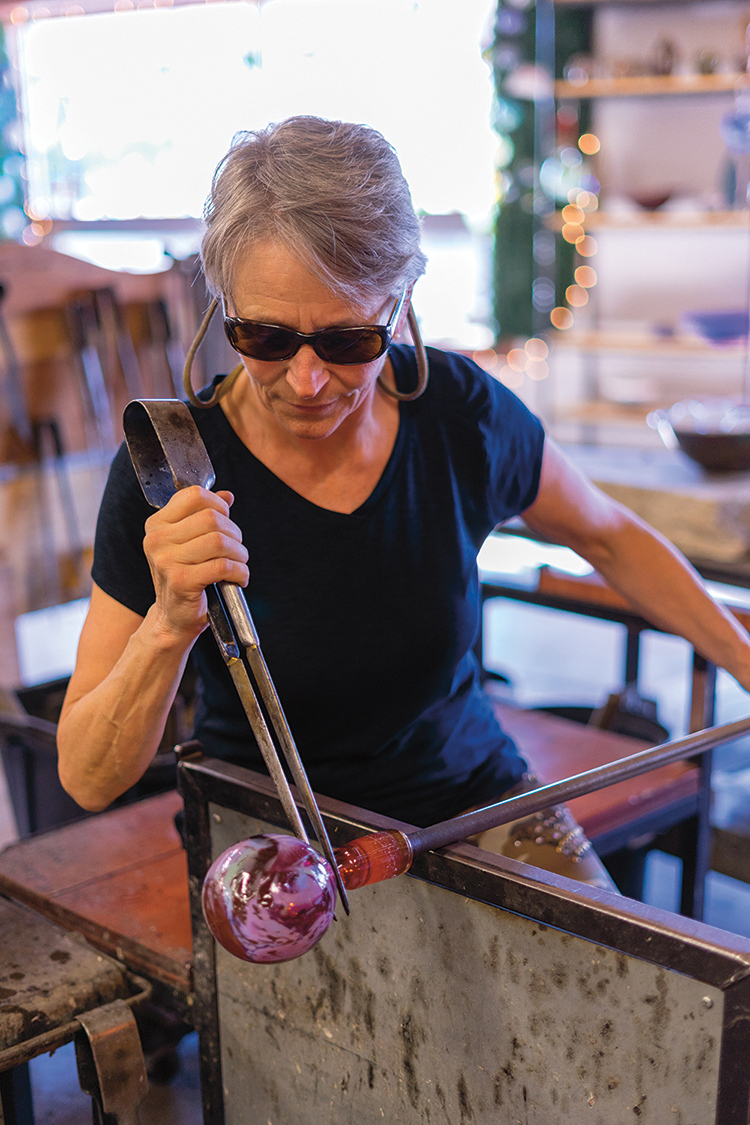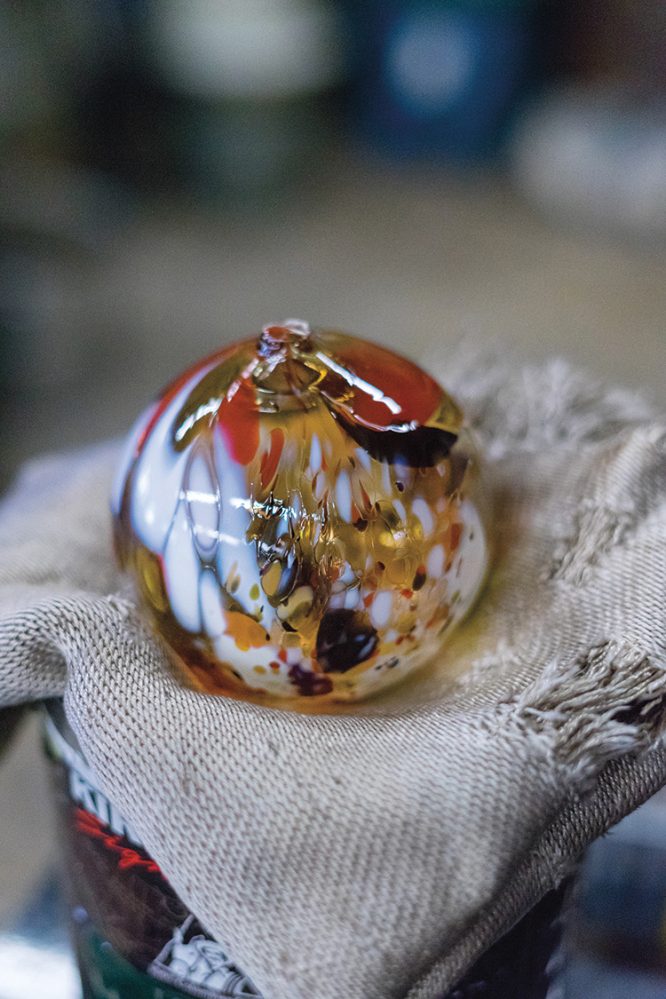Having a passion for glassblowing I find a bit odd, as it is extremely hot, challenging, and I often get burned. And still, my passion for playing with fire and molten glass is strong. Every time I walk into a hot shop, my joy meter is pegged on high.
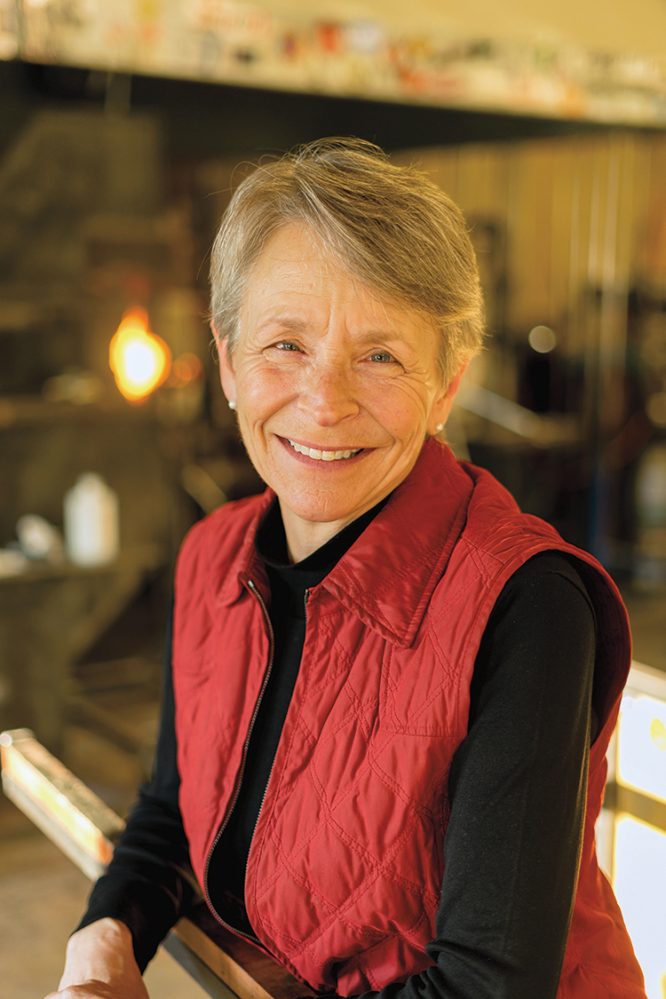
My passion began when I was 21 years old. I was attending college at the University of Washington. Making paper, creating decorative books with blank pages, and batik were my favorite three-dimensional art forms.
As my junior year came to a close, it was clear I had exhausted most of the classes that interested me. Luckily, my advisor had a solution. He suggested I take a glassblowing class off campus at Pratt Fine Arts Center, close to downtown Seattle. He remarked, “I’ll review your work every month, and you will earn credits towards graduation next year.”
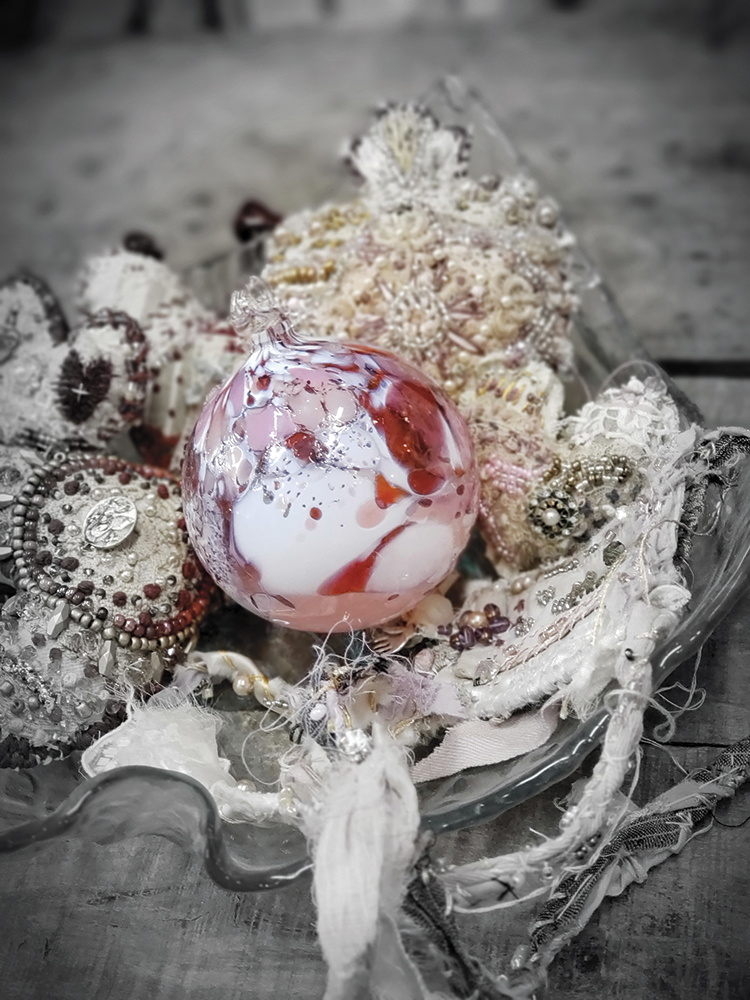
When I called Pratt Fine Arts Center, they said I needed a partner. All of my artist friends were busy. Plus, it was an expensive class.
One afternoon, I was on the phone with my mom, Susan Glass. “I’m not sure what to do. Nobody will sign up to take the beginner glassblowing class with me.”
I was surprised to hear my mom say, “I’ll do it with you, if you really need a partner.”
“Okay, great! I’ll sign us up. Thanks, Mom!”
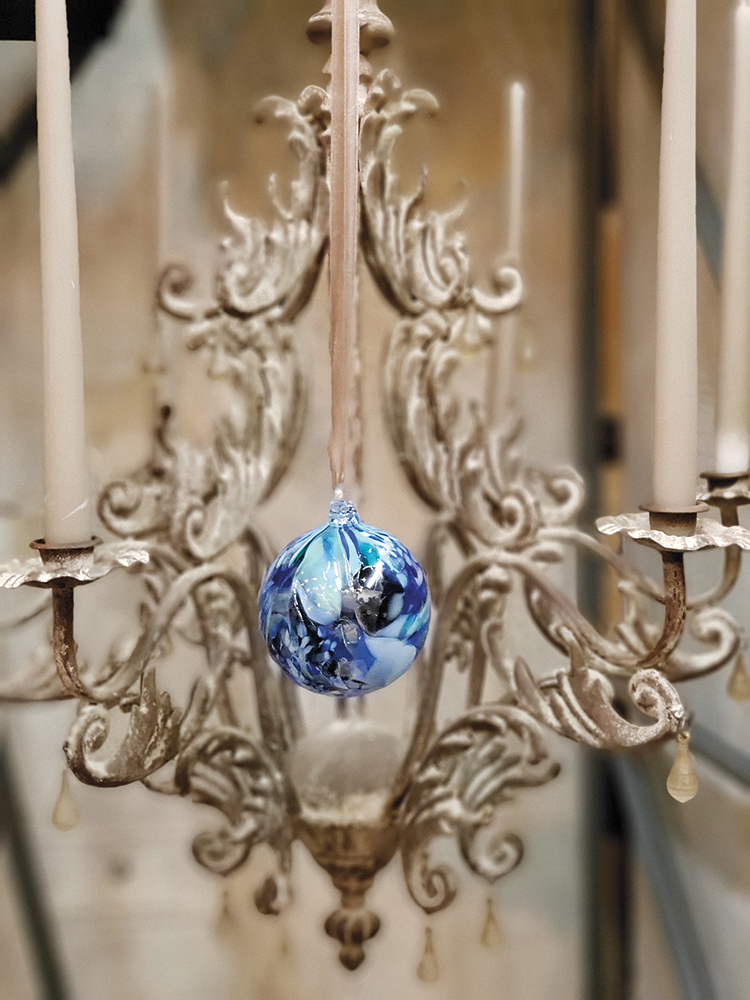
The next week, Mom picked me up, and we drove to Seattle’s Central District. Neither of us had ever been to that part of town before. Pratt is located high on a hill overlooking the Seattle Kingdome sports center. I could see Puget Sound in the distance.
Our glass instructor was Steve Harman. There were six of us students, assigned in pairs to an odd-looking bench with an assortment of metal and wooden tools hanging down the front side.
Steve explained a bit about the tools and then said, “Put on your sunglasses and gather around.” He opened the furnace, hot with molten glass. The heat was intense. At 2,200 degrees Fahrenheit, the blast of air from the furnace took my breath away.
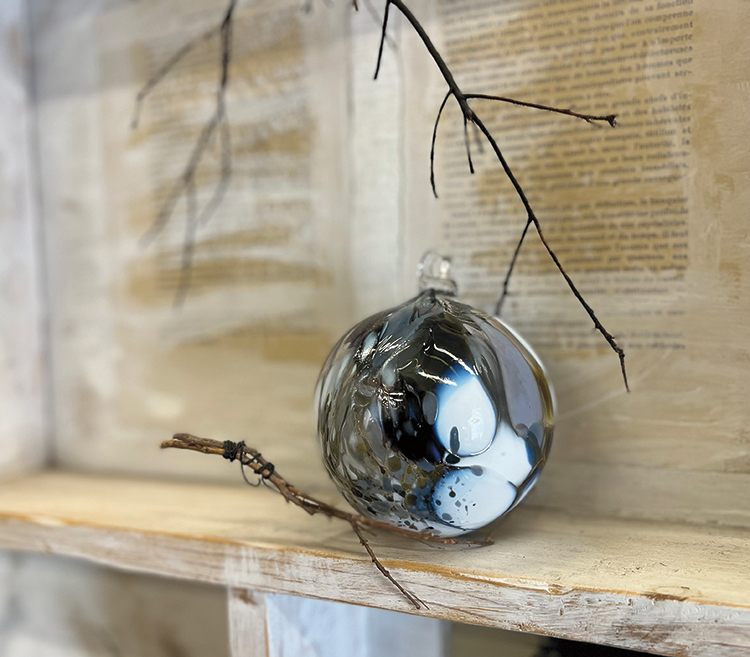
“This is where you’ll gather glass onto your blowpipe. Your assistant will open the door and shield your hands from the heat as best she can with these two wooden paddles.”
Steve opened the door again to demonstrate. He set the blowpipe inside the ledge of the furnace. Dipping the end of the steel pipe into the thick liquid, he rotated one full turn, then two. Quickly and carefully, so as not to drip glass on the edge of the furnace, he lifted the fiery ball out, continuously rotating the pipe.
Holding the blowpipe, he said, “See how fluid it is? You need to keep the pipe turning. Point it up, and the glass will flow towards you. Point it down, and the glass will get longer, easily out of control. Keep the pipe horizontal and bring your piece to the bench, like this.”
Steve sat down and carefully set the pipe on the metal arms of a workbench, always rotating. Then he pulled a wooden-handled tool from a bucket of water. It was a blackened wooden block, rounded-out from shaping hot forms again and again. As he rolled the ball of glass into the block, water sizzled and popped; smoke billowed.
“It’s so hot,” Mom exclaimed. “May I wear gloves to protect my hands?”
Steve answered, “No, you’d be burned before you could get the glove off. The sweat on your hand will turn to steam very quickly if you accidentally touch something that’s a thousand degrees.”
Taking turns, we experimented working with the glass while our assistant did her best to shield us from the heat with the wooden paddles.
At the end of class, Mom said, “I’m sorry, Narda. It’s just too hot for me.”
“Oh, Mom, hang in there for one more class. I need you. Please?” She did.
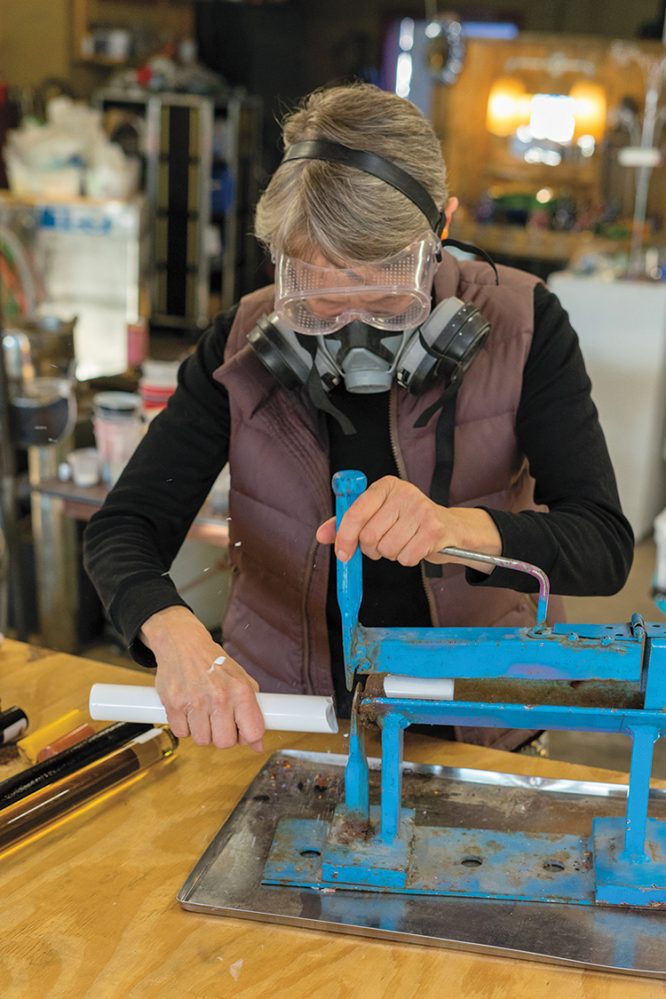
In the second class, we learned to use a tool called “jacks.” We made the neck of our glass piece with the pointy end of the jacks. While we used the opposite end to flatten the molten glass, I accidentally touched the hot tip to my bare arm. “Ouch!” I yelped.
Steve rushed over with a soothing ointment from the refrigerator. “This aloe works pretty well for burns. It’s going to smart for a while. You won’t die from glassblowing, but you’ll certainly get burned from time to time.”
At the end of the second session, I said to Mom, “You’re right, this is too hot. We don’t have to do the third class.”
“Actually, it didn’t seem so bad this time. Let’s stick with it,” she said with a twinkle in her eye.
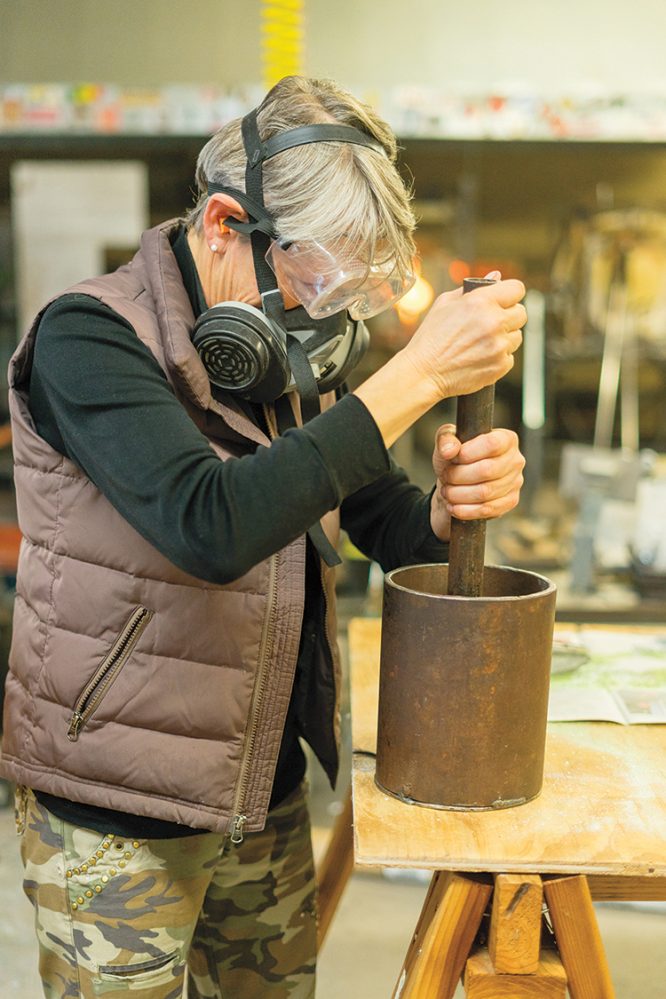
In the third class, we learned how to use color. Mom and I were exhilarated. When Steve invited us to the next-level course, we said, simultaneously, “Sounds great!”
We became known as the mother-daughter team. Paperweights were our first creations. Then we progressed to cups, bowls, and vases. I loved making functional art, and my favorite time of year to blow glass was the holidays.

Together with my brother, Richard Pitkethly, who had also become a glassblower, we made Christmas ornaments. We would crank up the music, and our teamwork became like a dance. One of us would gather the molten glass, roll it in colored chips, then hand it off to the next person, who would shape it, start a bubble, and blow it out. The third person would take the piece, knock it off from the blowpipe and put on a hot loop, then put the piece into the annealer.
Because of the teamwork with my mother and brother, this round shape was the most exhilarating to construct. I wanted to find a way to make this shape into a product that would sell all year long. Exploring ideas, I decided to create a Feng Shui Globe.
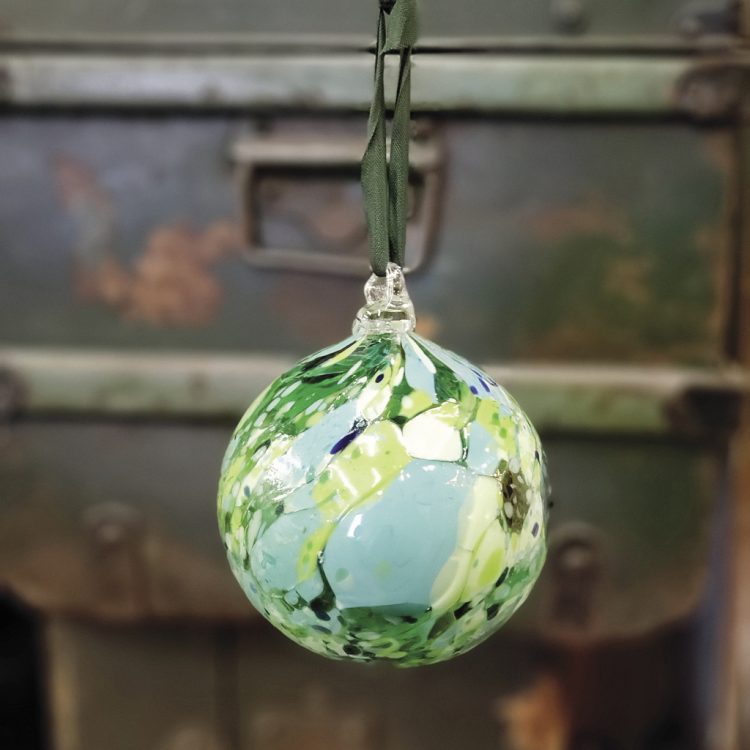
“Never doubt that a small group of thoughtful, committed citizens can change the world; indeed, it’s the only thing that ever has.”
Margaret Mead
Feng Shui means “The Law of Heaven and Earth.” Feng Shui is the ancient Chinese practice of placement and arrangement of space to achieve harmony between human beings and the environment. Color Feng Shui analyzes where things go to create the most healthful and beneficial energy flow. Using colors in your home based on how you respond to their energy is a crucial component of the process. Each of the nine areas of one’s life corresponds with a specific color combination in Feng Shui.

With 183 opaque and translucent glass colors to choose from, I began to make recipes using glass chips called “frit.” Frit is sold through glass distribution channels, and it’s all the same size. To achieve an array of frit sizes, I hired a welder to build a “crusher.” I chop off a two-inch chunk of color and crush my own frit.
It’s extremely toxic to work with chopping and crushing glass color; the fumes from this process can easily seep into one’s lungs and eyes, causing damage. Wearing a respirator, eye protection, and ear plugs to block the loud crushing noise is essential for safety.
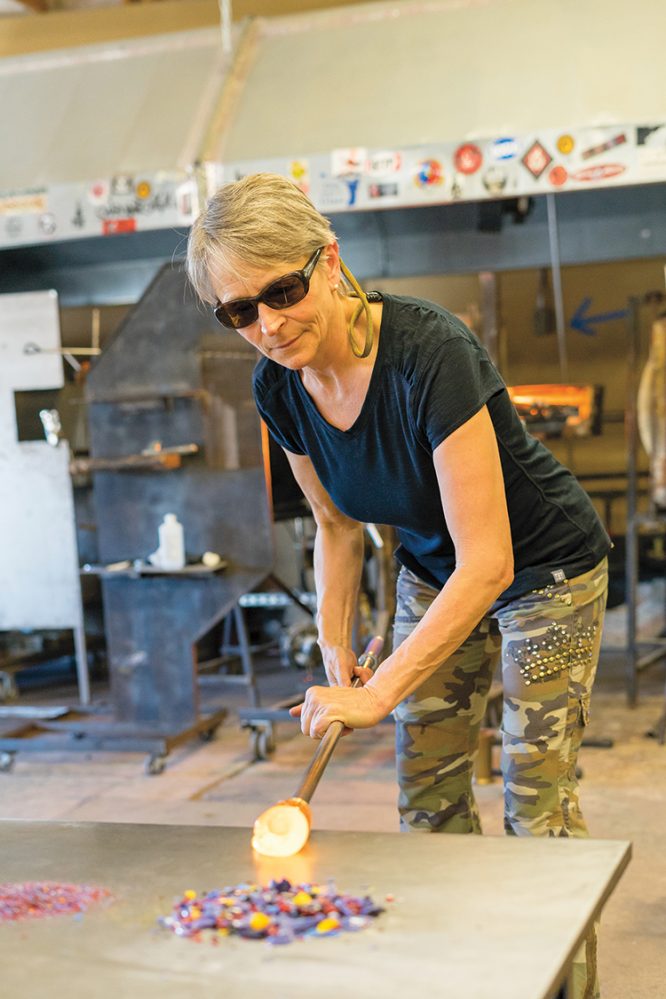
It took three months of mixing the color combinations specified explicitly in Feng Shui, blowing globes to analyze which of the translucent and opaque colors worked best, to finally solidify my recipes. My recipes for the nine Feng Shui Globes contain between eight and 17 varieties of colors.
Chopping and crushing solid glass color rods are the most intense part of my process to create the Feng Shui Glassy Globe; it is loud, heavy, hard work. Once the glass colors are crushed and placed into their numerically organized totes, using my measuring cups to build each recipe awakens my sense of achievement.
“When we try to pick out
anything by itself, we find it hitched
to everything else in the Universe.”John Muir
The next step in my process is to rent space in a glassblowing studio and hire an assistant. One day I may have my own glassblowing studio, but really, it’s much easier to rent the space.
When I step into the hot shop, the magic begins; the joy, the thrill of being by the heat, the danger, and the anticipation of creating a Feng Shui Glassy Globe that will hang in someone’s home, inspiring them to be the best that they can be. On the pamphlet I created, which accompanies each globe, I suggest hanging the globe where it can be easily reached, and spun often, to radiate its energy:
www.GlassyGlobes.com.
To learn more about my glassblowing family, check out my riveting story: www.NardasMemoir.com.

